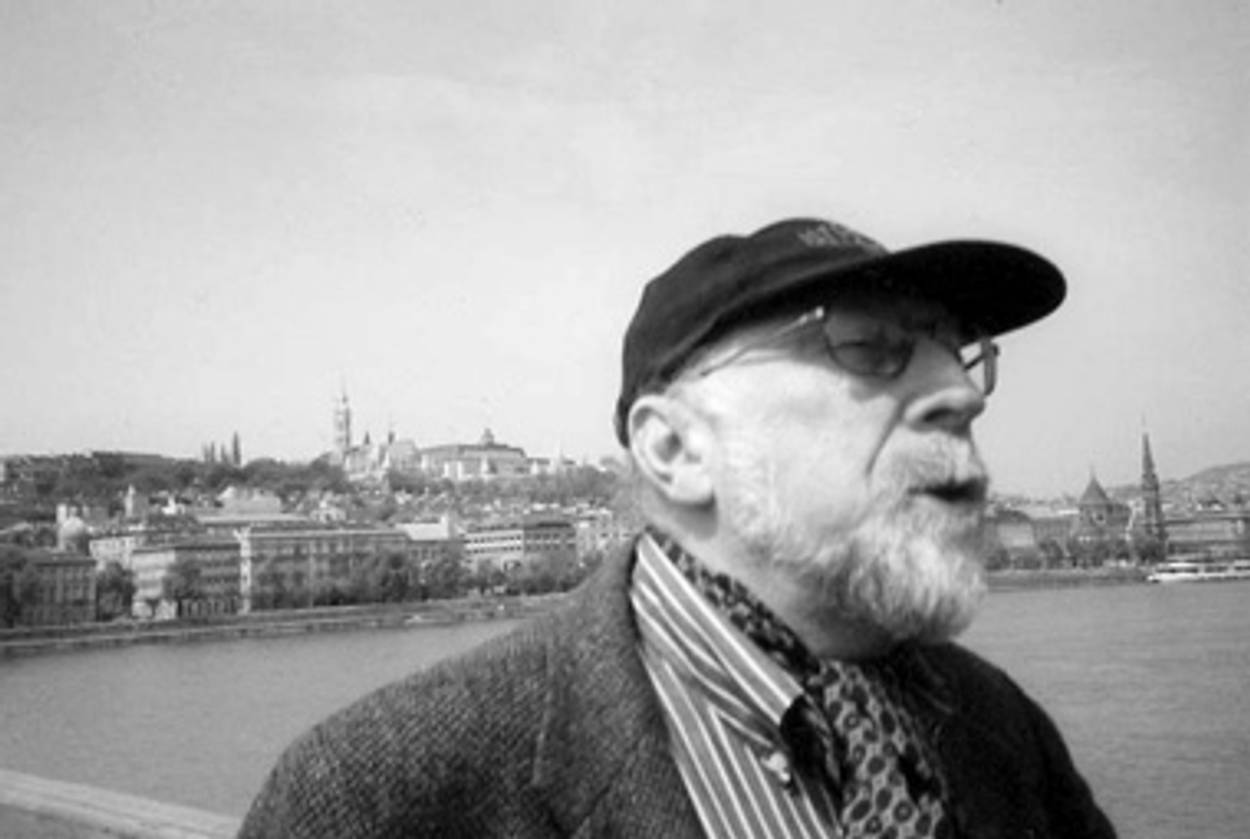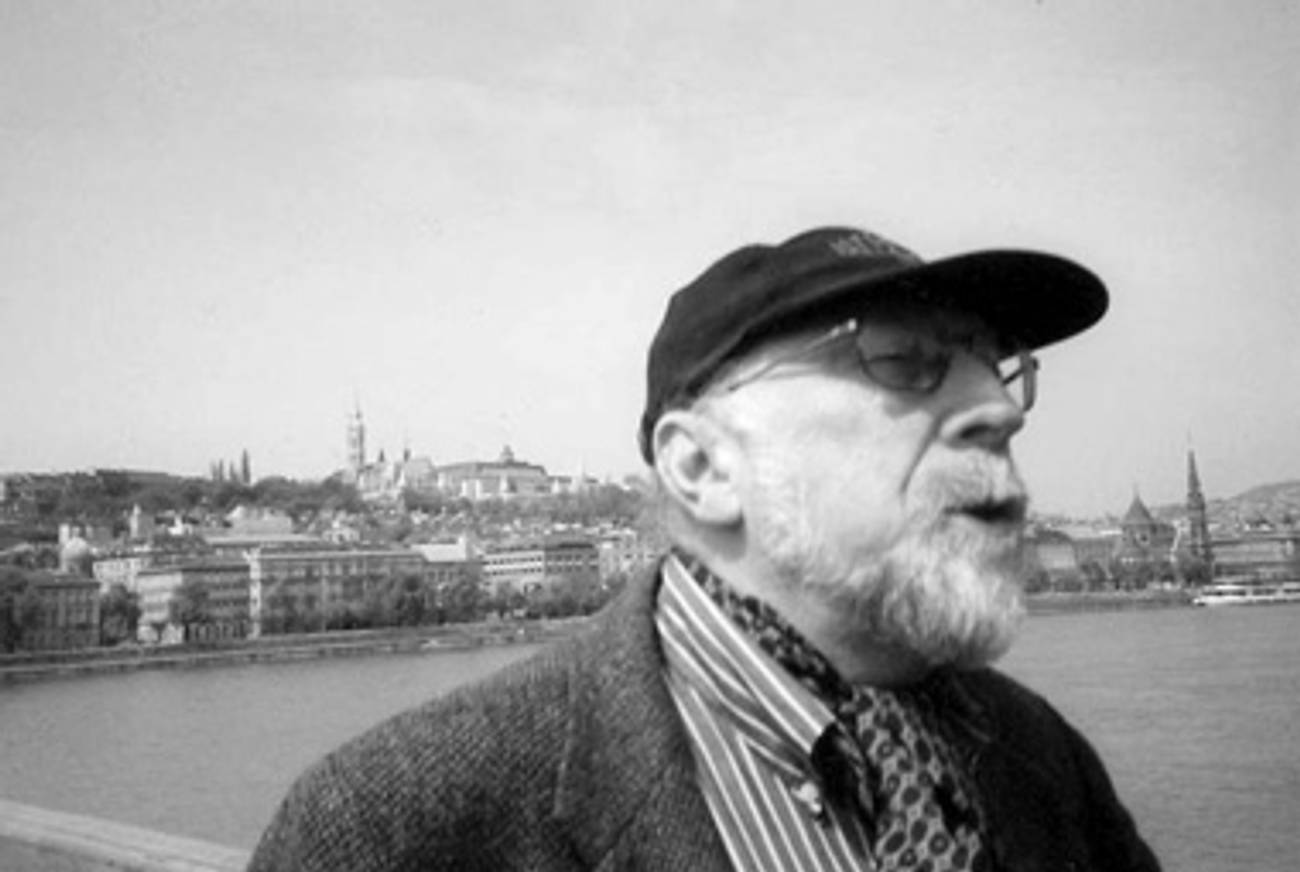Prefigurative Art
Poet Michael Heller wonders if the painter Max Beckmann foresaw the attacks of 9/11




Michael Heller has long been a poet of ambitious speculation and intellectual yearning. He labors in the shadow of a god he doesn’t adhere to, living on words that are echoes, “between hope and horror, between sacred sound/and profane air.” He is, by his own admission, both secular and a heretic and like any good heretical Jew, he takes his theology and his Jewish history seriously. He shows this clearly in “The Heresy” which appeared in his 2009 collection, Eschaton:
The god commanded a naked stone be set up
and with no marks upon it. But I had
lost that god or it had become something
like a rain one hears but does not see.
For Heller, God has become a mere anthropological fact, but one whose injunction against graven images Heller obeys. He will go as far as observe it—and Judaism—as a command to a certain kind of silence. And that silence is golden because its desecration is the stuff of disaster:
I took silence into time, marking the absence
of our late vocabularies in their conspirings,
these new mythologies , as they fell from on high
through our skies and through our roofs
scouring our minds as cosmic rays heave
traceries in the cool white lime of tunnels.
He can only mean 9/11 when he refers to the conspiracies that fall from the skies in a horrible parody of revelation. He divorces his negative Judaism from the consipirators’ adamant Islam. His heresy—which takes God’s word as a form of abstinence—is less an anathema than theirs, which claims to take that word literally.
His most recent book, Beckmann Variations, is also haunted by the attack on the World Trade Center. It is marked by a long meditation on the paintings of Max Beckmann. Beckmann, an émigré German whose mature works ranged from the Twenties until his death in 1950, was always Modernism’s odd man out. The formal ingredients of his work—his thick applications of paint, his heavy use of black outlines and his palette—bring to mind a number of his contemporaries, but his recipe was different.
Beckmann has often been lumped with German Expressionists like George Grosz, whose acid caricatures of Weimar society were meant to shock and disorient. But, as Heller points out, Beckmann wasn’t particularly interested in social satire or agitprop. At heart he was a mythmaker. He did not want to lampoon his contemporaries but to uncover the primal forces that drove them. He wasn’t looking for examples. He was hunting down archetypes.
Archetypes crowd Beckmann’s paintings—figures from Classical mythology, figures that should be from Classical mythology, generic kings, harlequins, people in masks and so on. It is not always clear how they relate to each other because Beckmann’s work mixes the contemporary and the archaic, the near and the far. This leads Heller to the conclusion that Beckmann’s viewers have respond to this art with art, have to confront Beckmann’s enigmatic stories with stories of their own.
Beckmann Variations is meant to be that kind of confrontation. Heller balances more-or-less conversational prose meditations on the paintings themselves with poems that, as he puts it, employ figures “that will release in language the power of the painting.” Heller translates that power into aphoristic poems:
The master departs he always departs.
So it is with kings who sail off on boat-like thrones,
who perform the miracle of going. Don’t wonders
occur when iron reason has left the scene,
and cruel profanations no longer astound us?
This is Heller’s way. He matches straightforward description with abstraction. And with Beckmann, you need a lot of abstractions for it all to make sense.
Kings, reason, wonder, and profanation. Heller’s Beckmann is a creature of World War I who understood early on the dangers of National Socialism. He was not a Jew but a “degenerate” artist (as the Nazis called them). He was fired from his teaching job in 1933 and finally fled Germany in 1937. So Heller, whose Judaism has been the subject of most of his work over the last four decades, is able to call on Beckmann as an expert witness to the murderousness of the world.
Beckmann serves an important purpose for Heller. He provides a model for visionary art, because he seems to apprehend the essential structures of the world. Vision—the prophetic stance that Heller associates with poets like William Blake and William Butler Yeats—enables the artist to tell us that what generates the news isn’t new at all. Visionaries use myth to show us the primal forces that drive us. Beckmann reveals to us that we are determined by our cravings for violence, sovereignty, and submission. This version of things is rather grim, but Heller admires Beckmann for accepting it without melodrama (although there is more than enough drama, even melodrama, in the paintings). By the same token, Heller does not see Beckmann’s work as tragic. Heller insists that there are brief moments of light in the paintings. These spots of brightness grant—at however distant a remove—a small degree of hope.
Most importantly, Beckmann seems in some deep way to have predicted 9/11. It is one of the tricks of historical perspective that you cannot look at Falling Man (1950) now without thinking of all those bodies plummeting from the Twin Towers. It looks like current events only caught up with Beckmann 50 years after his death.
Perhaps this is too easy. The man in the painting is metaphoric, but the people who threw themselves from the World Trade Center were heart-wrenchingly real. As a series of tropes and tentative explanations, Beckmann’s visionary art can tell us a good deal about the world but it did not foresee the destruction in Lower Manhattan. When we forget that it is at best a provisional figure of thought, we too fall into the potentially brutal literalism that Heller denounces in “The Heresy.”
Modernist writing presents Heller with two options: the mythic assertions that Heller finds in Yeats and the worldly precisions of his other avowed influences, poets like George Oppen, Carl Rakosi, Charles Reznikoff, and Louis Zukofsky. The events of 9/11 pull Heller in both directions. On the one hand, he reads the attacks on New York and Washington (and the subsequent attacks on London and Madrid) as a failure of enlightenment, as the result of precisely that danger that the Second Commandment warns us against. On the other hand, he wants to understand these atrocities mythically—in terms of jealous Olympians and fundamental drives. As a reader, I know which I prefer: I’ll plump for Reznikoff, Oppen, and Zukofsky any day. But as a poet, Heller knows that he does not have to make a final choice. It is the back and forth of the choosing itself that provides the drama of the work.
David Kaufmann teaches literature at George Mason University.
David Kaufmann teaches literature at George Mason University.